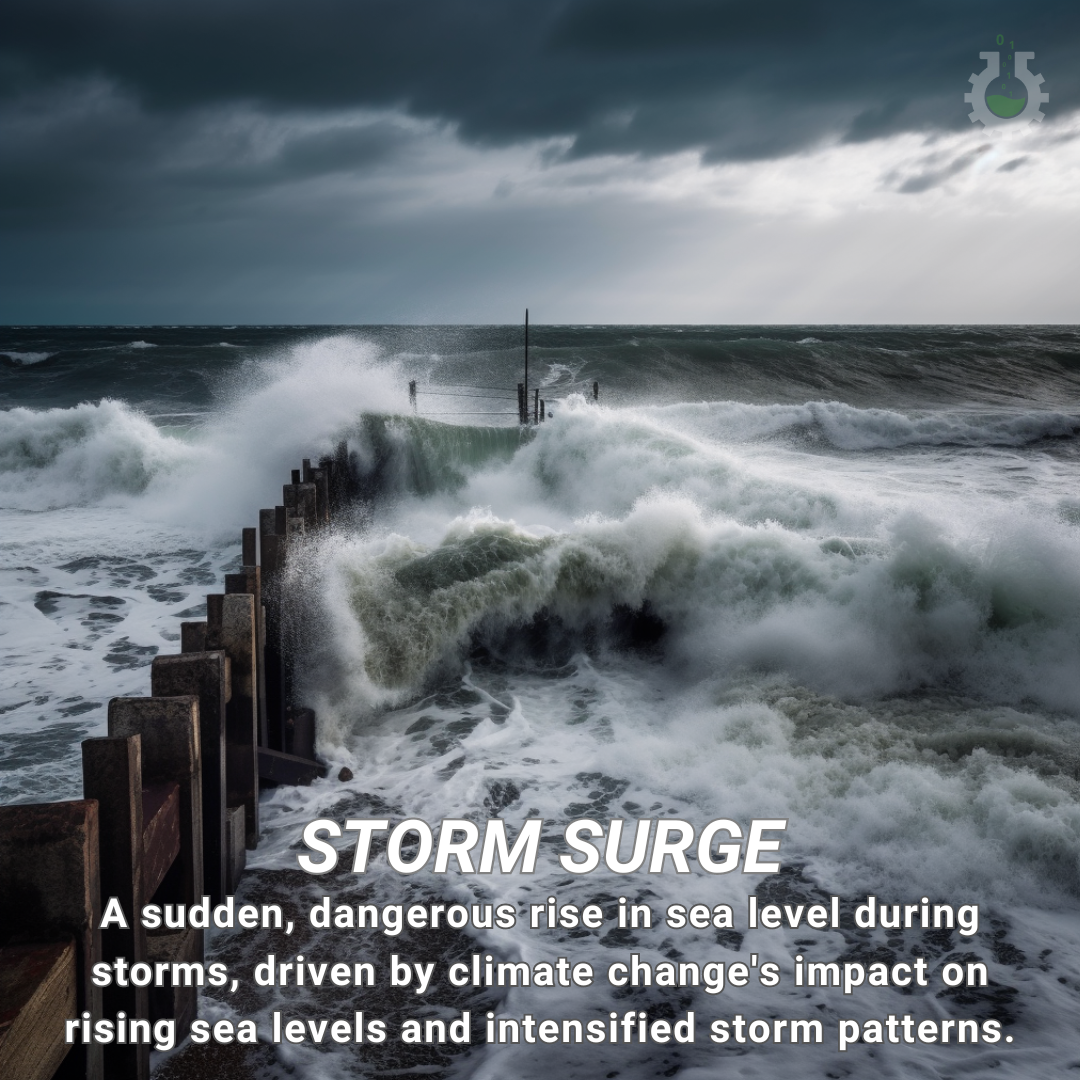January 29, 2024
Climate Change Poster Collection of the Day – Storm Surge
Book a Demo
Today’s Climate Change Poster Collection highlights Storm surge. Storm surges are coastal floods or events similar to tsunamis, characterized by a rise in water levels. These events are frequently linked to low-pressure weather systems like cyclones, which are known for their destructive power. Understanding the causes and consequences of storm surges is essential for coastal communities, as these natural disasters can lead to significant damage and loss of life.
One of the primary factors that influence the severity of a storm surge is high-speed wind. Other contributing factors include the shallowness and orientation of the water body, the timing of the tides, and changes in atmospheric pressure due to the storm. Each of these elements can affect the intensity of the surge, either individually or in combination.
Recent studies suggest that climate change and rising sea levels may increase the risk of storm surges. As global temperatures rise, sea levels also rise, posing a heightened threat to coastal communities. This potential increase in storm surge frequency and intensity necessitates a proactive approach to disaster management and mitigation.
Strategies to mitigate the effects of storm surges include both hard and soft infrastructure. Hard infrastructure refers to physical structures such as sea walls and breakwaters, while soft infrastructure includes natural or semi-natural systems like mangroves and wetlands. Enhancing coastal construction practices is another key strategy, as is implementing social strategies such as early warning systems, education, and evacuation plans.
Tropical cyclones, in particular, can produce storm surges. These events are characterized by an abnormal rise of water over predicted astronomical tides, leading to extreme flooding in coastal areas. The intensity of the storm, its forward speed, size, approach angle to the coast, central pressure, and the shape and characteristics of coastal features can all impact the strength of a storm surge.
Certain geographical areas are more vulnerable to the destructive power of storm surges than others. For instance, areas with a wide and shallow continental shelf, like the Louisiana coastline, are particularly susceptible. Notable surge events such as Hurricane Ike in 2008, Hurricane Katrina in 2005, and Hurricane Dennis in 2005, all caused significant damage and loss of life.
Storm surges present a serious threat to coastal communities, a threat that may increase due to climate change and rising sea levels. Proactive mitigation strategies are essential to protect these vulnerable areas and their populations. These strategies include improved construction practices, the development of early warning systems, and the implementation of effective evacuation plans.
Discover an inspiring collection of climate change poster.



